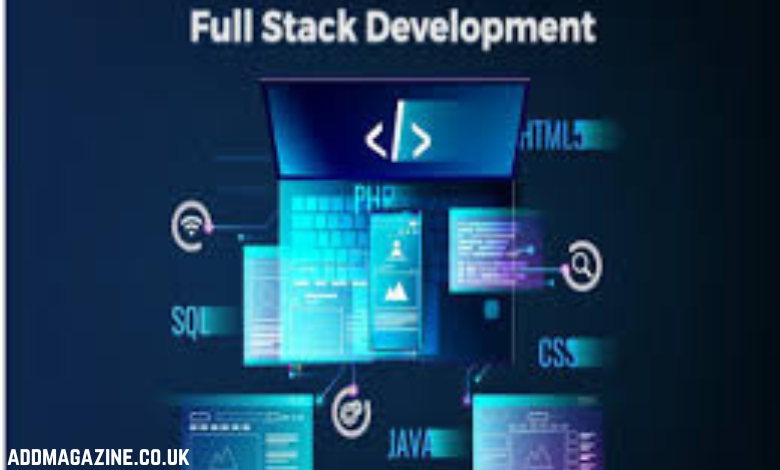Introduction
Writing code has become easy!
There are tutorials, templates, and even AI assistants that churn out lines of JavaScript in seconds.
But ask any business that’s been through a failed project – they’ll tell you code isn’t the hard part, deliver is.
Getting a customized software that works for the enterprise is a real-world challenge. More importantly, having a platform that scales with your brand and doesn’t break.
That’s why picking the right partner matters.
For instance, software development company, Brainvire, is an excellent example. They don’t just see projects as separate jobs; they see them as whole things.
Their full-stack development services encompass everything from the front end to the back end, integrations, the cloud, security, and even support after the launch. That’s what makes code suppliers different from real delivery partners.
Why Full Stack Delivery Matters
Modern apps are chains, not islands. If one link weakens, the whole product struggles. A front end can look beautiful, but if the APIs fail, users hit dead ends. A strong database is useless if nobody builds reliable connections to fetch the right data. Even slick features collapse without DevOps to handle load during growth.
For startups, a full-stack team means speed. One vendor handles MVP development without messy handoffs. For enterprises, it’s about integration. Big companies can’t afford “half-built” products that don’t connect to ERPs or CRMs.
For end-users, it’s simple: they don’t care where the bug comes from. They just want the app to work.
Overall, this is where a https://www.brainvire.com/full-stack-development/ steps into the picture.
The Pitfalls of Narrow Delivery
Many projects go off track because the scope is too narrow. I once saw a retail project where the UI was flawless, but no one thought about syncing data with inventory. Customers continued to order out-of-stock products, and the app eventually collapsed.
When you simply supply to the back end, you get the reverse problem: good APIs and bad user interfaces that people stop using. DevOps is typically seen as optional, yet that’s where errors generally happen. Apps may perform perfectly in testing but not when there is real traffic if they are not properly scaled and monitored.
That’s why “full stack” isn’t a buzzword. It’s a promise that every layer is accounted for, not just the visible ones.
What to Look for in a Partner
Discovery First
If they start coding without understanding your business, it’s a red flag. Discovery defines architecture, scope and prevents expensive rework.
UI/UX That Works
Design isn’t about creating a flashy store. Instead, it’s focused on complementing the overall user experience of the application.
Backend Strength
APIs, database design, microservices, they need to be solid. A weak backend leads to bottlenecks that cripple performance under growth.
Integration Experience
No business can run without a successful integration. Therefore, ensure that your partner can provide a complete integration experience for your applications.
DevOps Discipline
CI/CD pipelines, automated testing, and monitoring save teams from midnight firefights. Without this, scaling becomes painful.
Post-Launch Support
You don’t want a partner that disappears post launch. Ensure that your chosen partner provides support post launch as well.
Why Brainvire Stands Out
Many vendors use the “full stack” tag, but few deliver it effectively. Software Development Company Brainvire has built its name by owning complexity. As an Odoo Gold Partner, they’ve handled enterprise-grade challenges, such as migrating millions of records, connecting legacy systems, and scaling platforms to support global traffic.
Their full-stack development services include more than coding. They bring architects, UX designers, QA engineers, and DevOps under one roof. That means fewer silos and clearer accountability. Clients don’t need three vendors; they get one team that speaks business and tech fluently. That balance is rare, and it’s why Brainvire is often chosen for long-term partnerships.
Extras That Really Matter
Project Management
Transparent sprints, clear timelines, and actual communication, no disappearing acts halfway through.
Collaboration Culture
Teams that listen, adapt, and explain in plain words, not jargon.
Training and Handover
Clients should walk away confident, not dependent. A good partner trains teams before moving on.
Industry Awareness
Each sector has quirks, finance cares about compliance, retail about speed, and healthcare about privacy. Vendors who adapt here save headaches later.
These “soft extras” are often what determine if the launch feels smooth or chaotic.
Mistakes Clients Keep Making
Chasing the Cheapest Bid
The lowest cost often means hidden compromises. Fixing bad code later usually costs far more than doing it right the first time.
Over-Reliance on One Developer
A single “rockstar” can’t cover design, DevOps, backend, and integration. Teams succeed where individuals burn out.
Skipping DevOps
It feels optional until the first downtime crisis. Then it’s suddenly the most expensive oversight of the project.
Forgetting Support
Software doesn’t freeze at launch. Bugs and updates will come. Without support baked in, you’ll be scrambling for help.
ROI of Full Stack Delivery
So why pay for full-stack instead of piecemeal teams? Because the return shows up everywhere. Projects move faster, integration errors shrink, and scaling doesn’t require rebuilding from scratch.
Speed to Market: It gives you the ability to market your products while there’s ateam handling everything inside operations.
Long-Term Savings: Having a clean code allows you to create an architecture that can be scaled effortlessly.
Full stack isn’t a premium—it’s insurance.
Conclusion
Code is easy. Results are not. Businesses need partners who can deliver outcomes across every layer, not vendors who stop at one.
When looking at vendors, don’t only inquire about their features. Find more about DevOps, support, and how to connect.
At the end of the day, great software isn’t just built, it’s delivered, tested, scaled, and supported. That’s what “beyond code” really means.




